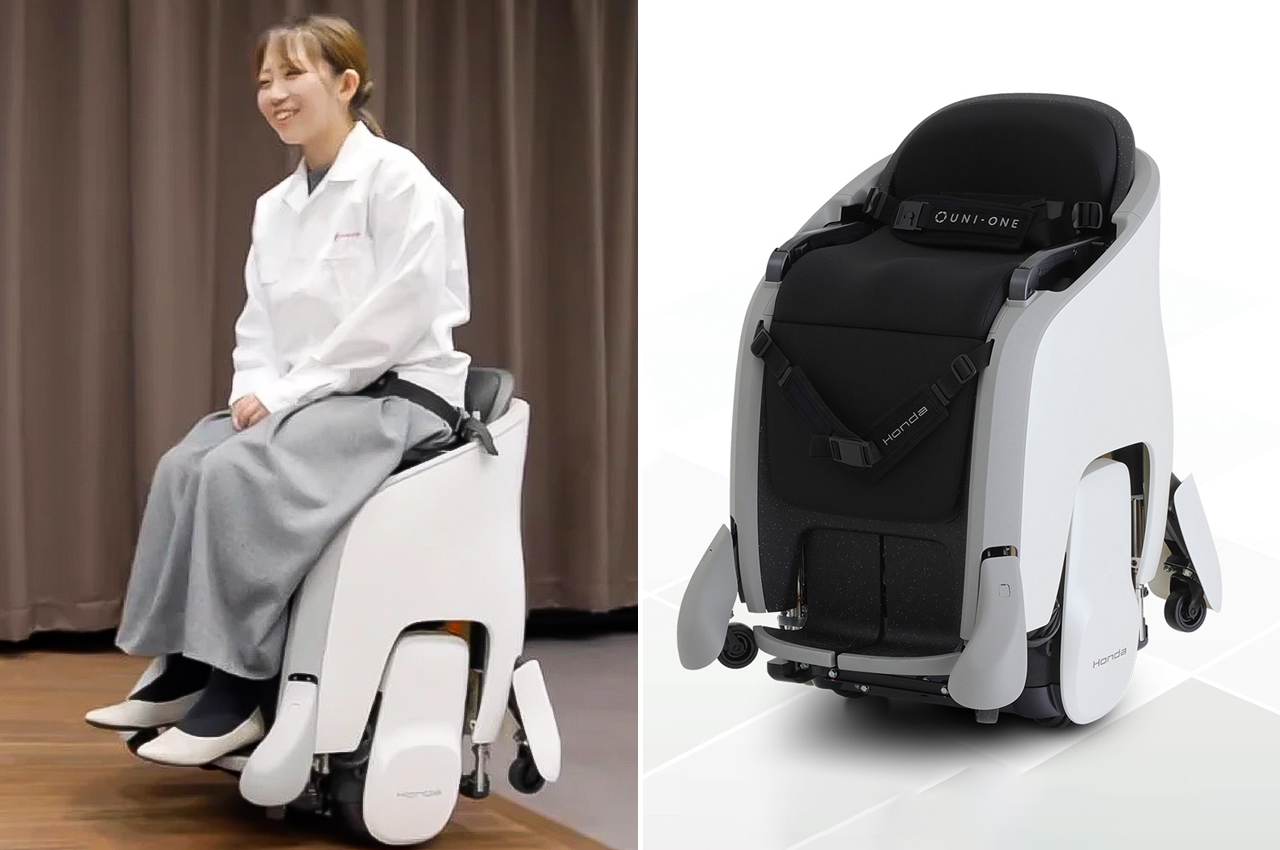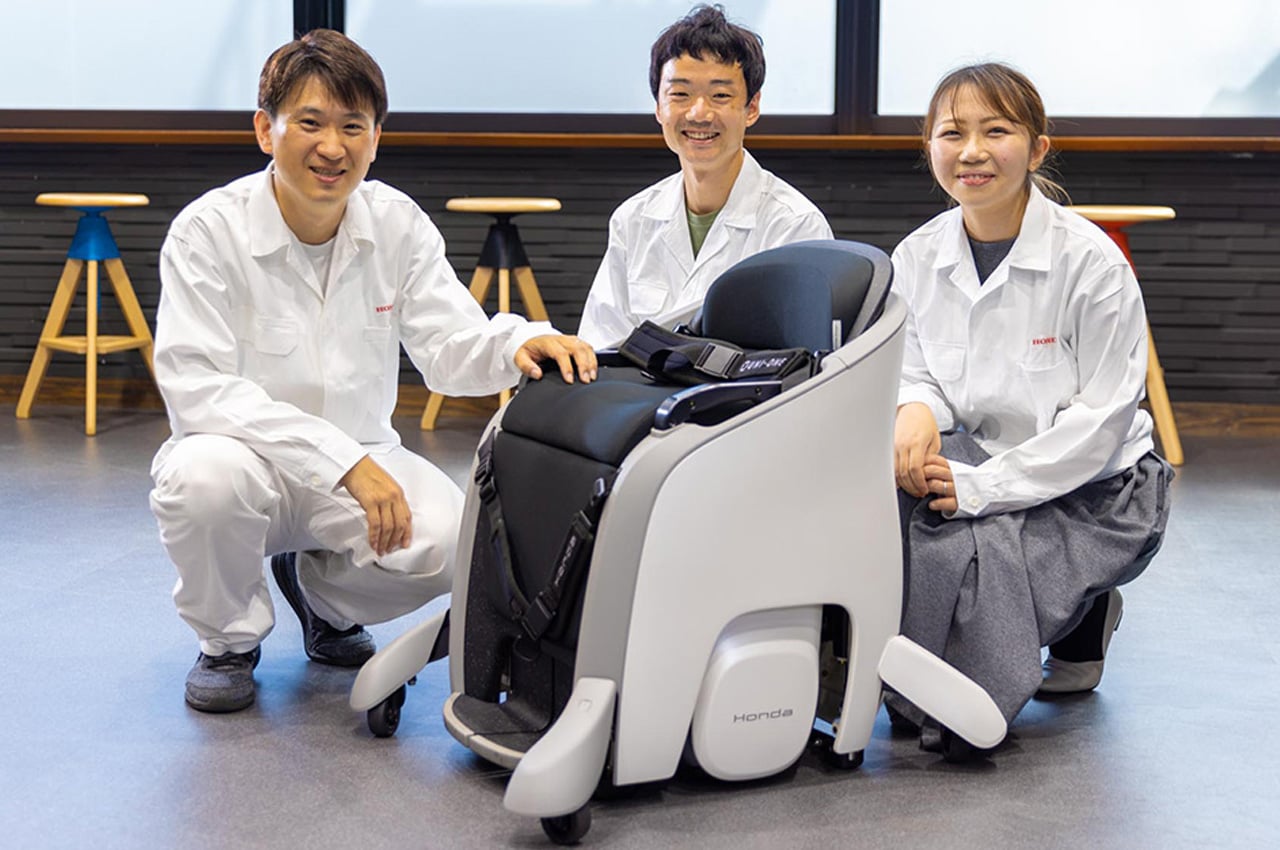Mobility devices, designed to deliver independence to the differently-abled, often intrigue me. Whether directly or indirectly targeted at this population, these click with me and I cannot hold back but share the information/design with the audience. One such extension of – almost a decade old – smart motorized stool from Honda is the Uni-One, which is a self-balancing and easy-to-steer robotic wheelchair for the future.
Based on the Honda Uni-Cub introduced first in 2012, the Uni-One is designed to offer hands-free personal mobility to anyone with lower limb immobilization or the lazy workforce that would rather not make the effort of raising their butt from the seat to get to the meeting room.
Designer: Honda


This robotic chair can be steered by shifting the weight (in the direction you want to move) while sitting on it. The Uni-One can move naturally by detecting the rider’s body movement, much like mimicking the concept of walking in daily life. Uni-One thrives on the independence it offers, not only in case of mobility but rending the user’s hands-free for other tasks.
When you’re strapped into the Uni-One, you have your hands free to safeguard yourself in case of a trip over (even though Honda has perfected the robotic chair so no such incident occurs). Expanding a range of possibilities beyond walking and wheelchair mobility, the Uni-One aims to help people – from all walks of life – in their daily routines. The chair can be guided by either the movement of the body or using a joystick, which is essential for times when the device encounters a malfunction.
Interestingly, Honda Uni-One is ridable in two positions: low, stable mode, or raised mode, a position pretty close to that of a standing person. There is no word on the battery capacity or the operability speeds of the Uni-One, at the time of writing. The device has been exhibited and has bagged the Good Design Awards 2022; I am assuming, the information is just around the corner.
